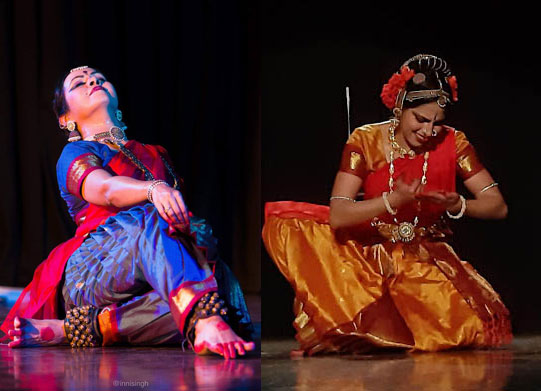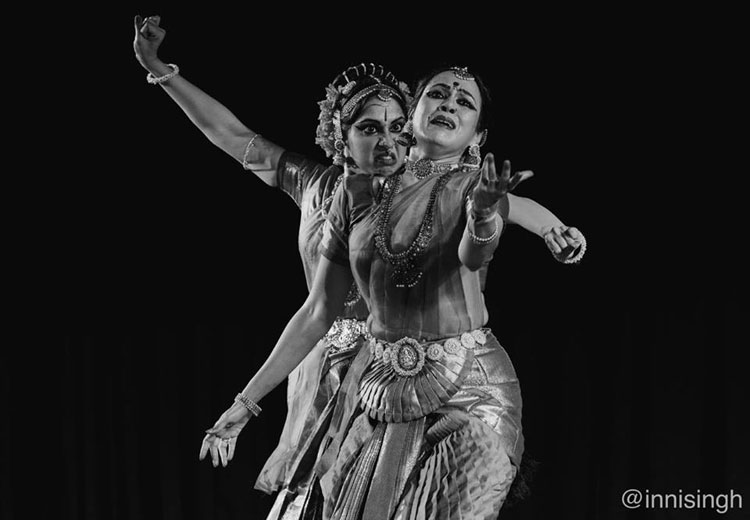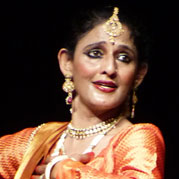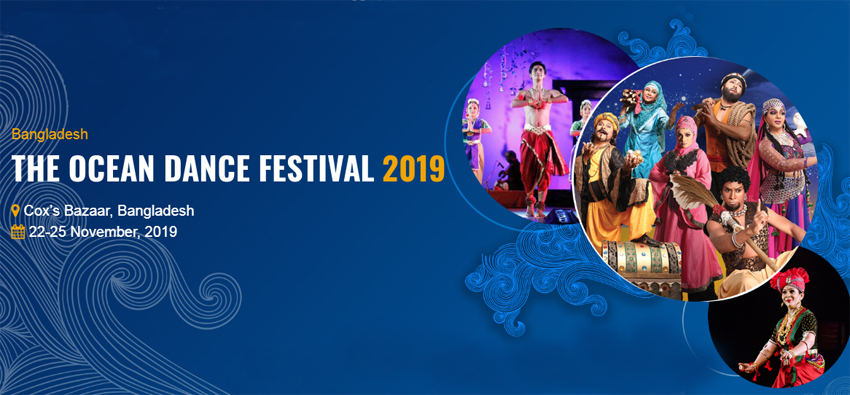Battling With ‘Traditional Content of Gaathas/Myths in Dance
 A major concern and challenge today for the Indian Classical Dancers are engaging and incorporating ‘traditional’ narratives called the Gaathaas in their dance Performances. These Gaathaas are related to the World of Indian Gods and goddesses. The Gaathaas, on the one hand, form the central content of Indian Classical dances and are symbols to enter the universe of the dance traditions. On the other hand, demand and the mindset conditioned by the idea of ‘Modernism’ by audiences, and patrons of dance creates a dilemma for dancers to reject the Gaathaas, or explore methods to incorporate and re-position the Gaathaas in their performances. After all, dancer’s themselves need to align to markets to audiences and other aspects to survive capitalist modalities. This article offers a negotiation by critiquing the performance of dancers – Bharatanatyam – Arupa Lahiry and Kuchipudi – Payal Ramchandani a part of the Double Bill Concert series presented by the India International Centre in New Delhi.
A major concern and challenge today for the Indian Classical Dancers are engaging and incorporating ‘traditional’ narratives called the Gaathaas in their dance Performances. These Gaathaas are related to the World of Indian Gods and goddesses. The Gaathaas, on the one hand, form the central content of Indian Classical dances and are symbols to enter the universe of the dance traditions. On the other hand, demand and the mindset conditioned by the idea of ‘Modernism’ by audiences, and patrons of dance creates a dilemma for dancers to reject the Gaathaas, or explore methods to incorporate and re-position the Gaathaas in their performances. After all, dancer’s themselves need to align to markets to audiences and other aspects to survive capitalist modalities. This article offers a negotiation by critiquing the performance of dancers – Bharatanatyam – Arupa Lahiry and Kuchipudi – Payal Ramchandani a part of the Double Bill Concert series presented by the India International Centre in New Delhi.
The structure of the performance was divided into three parts, while the first and last were duets, in the middle, the dancers each had a solo piece. The nature of the duets presented themselves as dialogues between two dance traditions (Bharatnatyam and Kuchipudi). The first duet perceived as a conversation was through the repertoire of Abhinaya (mimetic art) and the concluding piece Tarangam a conversation through modalities of pure dance (Nritta). The solo compositions chosen were abhinaya or mimetic art pieces.
Martha Graham & Myths in Dance
Iconic American Modern dancer Martha Graham worked on several compositions aligned or inspired by the Greek Mythology. The concept of mythologies offered by the West is similar to the Indian Gaathaas. The Indian Gaathaas is distinct from mythologies in that they are a lived reality and are interwoven in the lives of pilgrims and devotees linked to different Gods/Goddesses. However, both myths and Gaathaas serve as metaphors and are therefore timeless and space-less. In that sense, the content of Indian dance affiliated with Indian Gods is neither traditional nor modern – which are really about frames of time. The Indian Gaaatha is a concept which exists out of time. As metaphors, characters in Gaathaas and Myths provide dancers with the content to create for contemporary audiences a frame of modern theatre. Graham used the myths as raw material to portray women and other social contexts. She re-wrote the new perspectives through her language of dance successfully displaying the importance of timelessness of myths.
Indian Classical Dance & Gaathaas
Keeping Grahams notion of myth and dance, I critique taking just one part of the duet performed by Arupa Lahiry and Payal Ramchandani to illustrate the manner Gaathaa is moulded in the Indian classical dance by a generation who is urban, lives in a virtual world and is stepping into the center of the dance arena as solo professionals. It is a generation that struggles to validate the importance of the timeless content which organizers and audiences perceive as archaic and traditional.
The dancers Arupa and Payal chose for their introductory piece ‘Bhayami Raghuramam’ composed by the patron king and artist – Maharaja Swathir Thirunal. It was a glorious running narrative of the Epic Ramayana. The dancers crafted the rendering in a manner that on the one hand they sustained the identity of their individual dance language (Bharatanatyam and Kuchipudi) but together they dialogued to create the theatre of the Gaatha. The narrative in the song demanded that the two women entered and exited gendered roles with fluidity in fast series of moving narratives. For example, while in one frame one was the male Lakshman, the other the female Surphnakha; the frames shifted swiftly, Payal transformed from Khevat, Ravana, Baali, while Arupa from Rama, Dashrath, to Sita. Together they created the flight of Jatayu and played the role of the monkey army. The characters as the content of the Gaathaa of the Ramayana – expanded, collapsed, was recreated and dissolved in quick succession. The controlled lines, friezes, triangular and circular geometry marking the rendering of the body movements of Bharatnatyam by Arupa, fused with the operatic theatricality characterized by lyrical geometry imbued in roundness and flexibility of Kuchipudi rendered by Payal.

The composition unfolded through the dialogue where the creation and completion of one episode moved into another displaying compelling rewriting of the sung composition through dance. There was a display of skilled organization of characters, transformation of locations of spaces of episodes, situations into symbolic sojourn of psychological mindscape. The vocabularies of the dance forms worked to illustrate to a ‘modern’ audience the inner feelings of the performers, emotions, desires, and interaction with each other’s spaces of body and minds.
However, the content of the Gaathaas as a landscape of metaphors could have gone a level higher if the performers were to limit the number of scenes. Perhaps it would provide themselves to develop various emerging characters as they unfolded and the audience a space to imbibe the journey. Perhaps they could have added an element of sanchaari or the technique of impromptu expansion of the meaning of words in the poem so that the epic characters of Ramayana located to play the role of a metaphor affecting the psychological plain of the audiences. In turn, making reasserting the timelessness of the Traditional content.

Conclusion
There is no doubt, the perfect technique and well-practised performance had the audience transform into rasikas (immersive audiences who relished the performance). The duet performance in the two Indian Classical dance languages presented the potential for a lived experience to illustrate the timeless and ever modern value of Gaathaas, myths and their characters. As Martha Graham appropriately said about Myth, “They (represent) ancestral footsteps behind me, pushing me when I am creating a new dance, and gestures are flowing through me. Whether good or bad, they are (and will remain) ancestral.” Yes, the Gaathas are the very roots of Indian Classical Dance. As metaphors they provide endless interpretation for every time frame, they, therefore, remain ever contemporary. The Gaathaas provide the raw material for mapping influence of modernism, psychoanalysis, and sociology. Rejecting or dismissing them in the name of becoming contemporary is similar to cutting roots of the very core identity of Indian Classical Dance. The duet Arupa Lahiry and Payal Ramchandani provided the Window of hope as they move to create their stamp as solo performers through dialogue in a duet performance.











